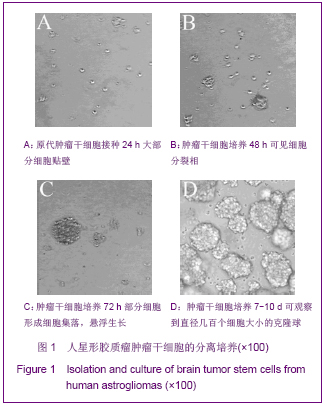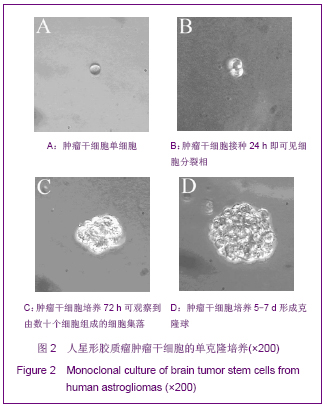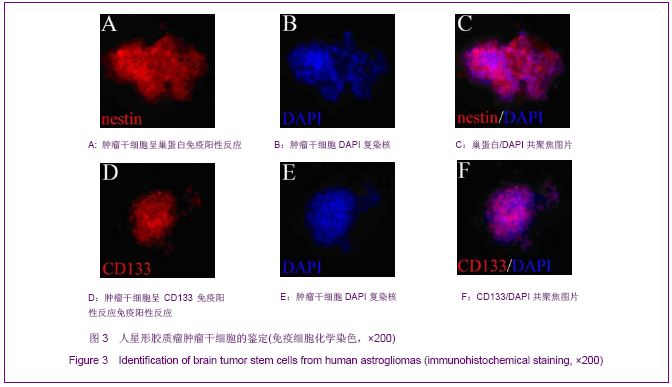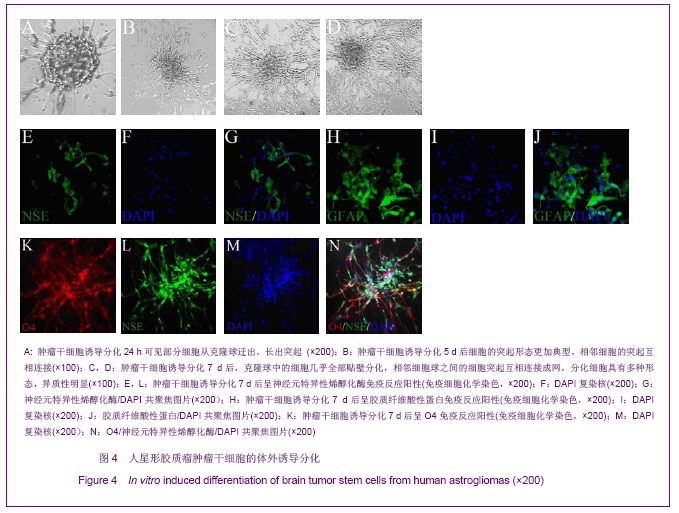| [1] Gotlieb-Stematsky T, Yaniv A, Gazith A. Spontaneous, malignant transformation of hamster embryo cells in vitro. J Natl Cancer Inst. 1966;36(3):477-482.[2] Bonnet D, Dick JE. Human acute myeloid leukemia is organized as a hierarchy that originates from a primitive hematopoietic cell. Nat Med. 1997;3(7):730-737.[3] Al-Hajj M, Wicha MS, Benito-Hernandez A, et al. Prospective identification of tumorigenic breast cancer cells. Proc Natl Acad Sci U S A. 2003;100(7):3983-3988.[4] Li C, Heidt DG, Dalerba P, et al. Identification of pancreatic cancer stem cells. Cancer Res. 2007;67(3):1030-1037.[5] Collins AT, Berry PA, Hyde C, et al. Prospective identification of tumorigenic prostate cancer stem cells. Cancer Res. 2005; 65(23):10946-10951.[6] Huang Q, Dong J, Zhu YD, et al. Isolation and culture of tumor stem cells from human brain glioma tissues. Zhonghua Zhong Liu Za Zhi. 2006;28(5):331-333.[7] Yu SC, Yi L, Zhou ZH,et al. Isolation and identification of tumor stem-like cells from human glioma cell line U87 after treatment of vincristine. Ai Zheng. 2007;26(12):1388-1391.[8] Gunther HS, Schmidt NO, Phillips HS, et al. Glioblastoma-derived stem cell-enriched cultures form distinct subgroups according to molecular and phenotypic criteria. Oncogene. 2008;27(20):2897-2909.[9] Ghods AJ, Irvin D, Liu G, et al. Spheres isolated from 9L gliosarcoma rat cell line possess chemoresistant and aggressive cancer stem-like cells. Stem Cells. 2007;25(7): 1645-1653.[10] He J, Liu Y, Xie X,et al.Identification of cell surface glycoprotein markers for glioblastoma-derived stem-like cells using a lectin microarray and LC-MS/MS approach. J Proteome Res. 2010;9(5):2565-2572.[11] Lendahl U, Zimmerman LB, McKay RD. CNS stem cells express a new class of intermediate filament protein. Cell. 1990;60(4):585-595.[12] Singh SK, Clarke ID, Terasaki M,et al. Identification of a cancer stem cell in human brain tumors. Cancer Res. 2003; 63(18):5821-5828.[13] Liu G, Yuan X, Zeng Z,et al. Analysis of gene expression and chemoresistance of CD133+ cancer stem cells in glioblastoma. Mol Cancer. 2006;5:67.[14] Qiang L, Yang Y, Ma YJ, et al. Isolation and characterization of cancer stem like cells in human glioblastoma cell lines. Cancer Lett. 2009;279(1):13-21.[15] Thon N, Damianoff K, Hegermann J,et al. Presence of pluripotent CD133+ cells correlates with malignancy of gliomas. Mol Cell Neurosci. 2010;43(1):51-59.[16] Beier D, Wischhusen J, Dietmaier W, et al. CD133 expression and cancer stem cells predict prognosis in high-grade oligodendroglial tumors. Brain Pathol. 2008;18(3):370-377.[17] Griguer CE, Oliva CR, Gobin E,et al. CD133 is a marker of bioenergetic stress in human glioma. PLoS One. 2008;3(11): e3655.[18] Beier D, Hau P, Proescholdt M, et al. CD133(+) and CD133(-) glioblastoma-derived cancer stem cells show differential growth characteristics and molecular profiles. Cancer Res. 2007; 67(9):4010-4015.[19] Clement V, Dutoit V, Marino D, et al. Limits of CD133 as a marker of glioma self-renewing cells. Int J Cancer. 2009; 125(1): 244-248.[20] Lottaz C, Beier D, Meyer K, et al.Transcriptional profiles of CD133+ and CD133- glioblastoma-derived cancer stem cell lines suggest different cells of origin. Cancer Res. 2010;70(5): 2030-2040.[21] Piccirillo SG, Combi R, Cajola L, et al. Distinct pools of cancer stem-like cells coexist within human glioblastomas and display different tumorigenicity and independent genomic evolution. Oncogene. 2009;28(15):1807-1811. |




